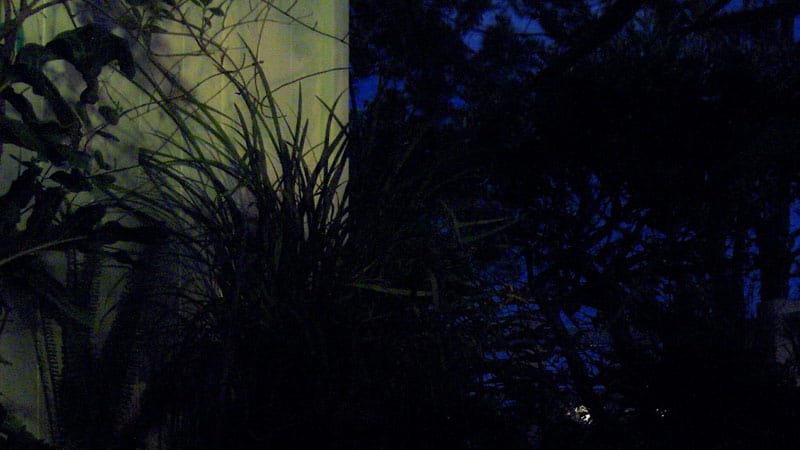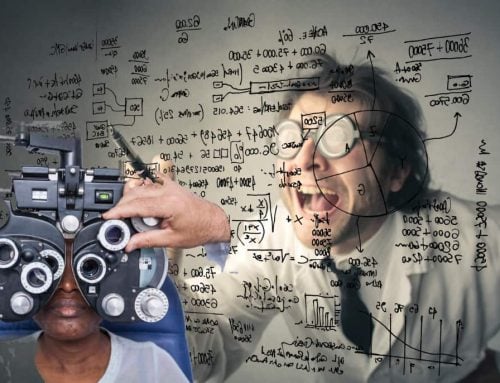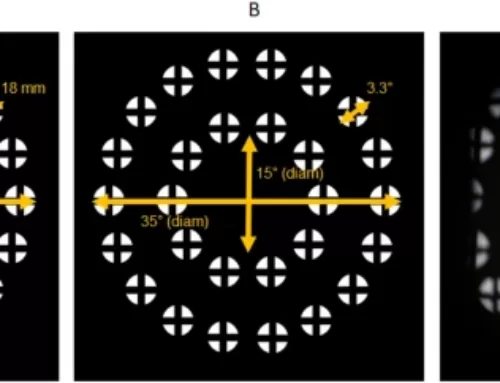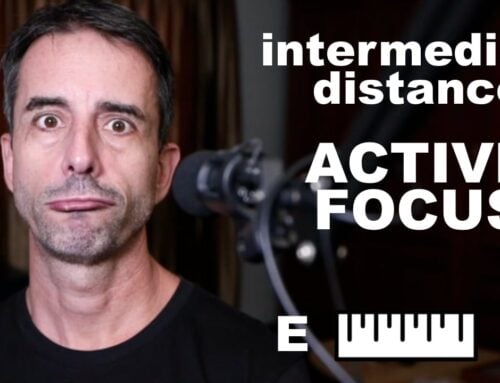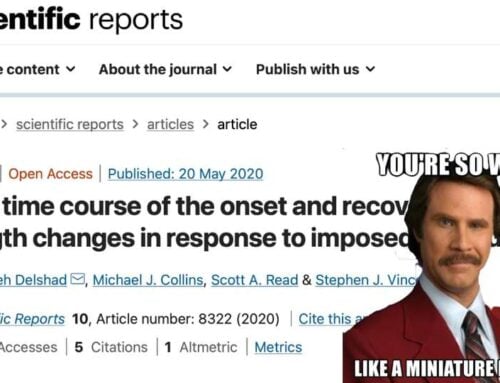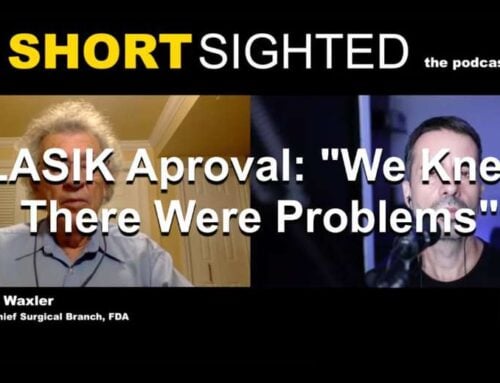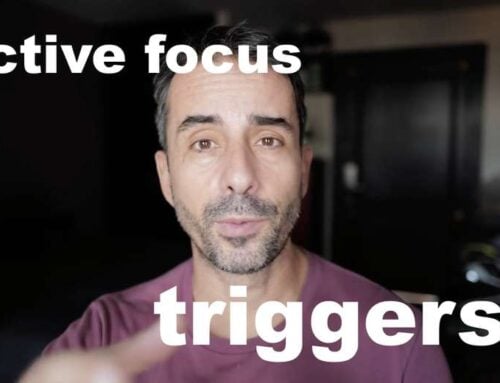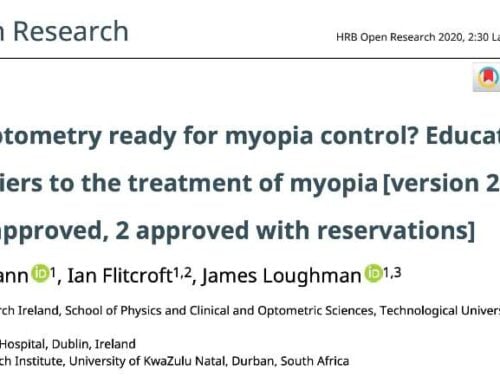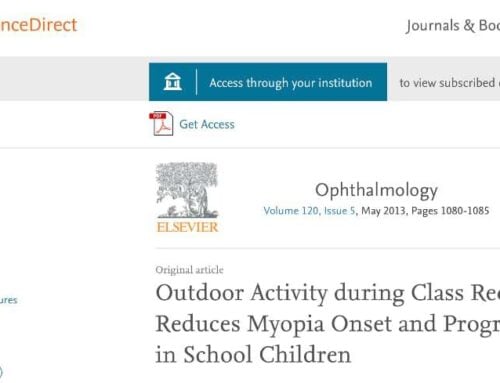Night blindness as a symptom can have several causes.
Since we deal with myopia here, what we talk about usually goes back to the subject of how well you can see. Often times new students are confused about the impact of light on their eyesight. Note that there are several other causes of what’s described as “night blindness”, which we aren’t discussing in this article.
With an otherwise healthy eye, you still will notice that you can see notably less well in dim light. If you don’t have perfect vision, this difference will seem more pronounced. This falls under the topic of how much correction is necessary to give you reasonably clear vision, if you are currently myopic.
You might have heard me giving the short version:
In dim light, you may need half diopter more to see as clearly as in regular daylight.
That’s pretty vague, though it’s what most people remember even if I come around with the lengthy explanation. If you haven’t read the related (and important) 1000-lux rule, take a peak at that post as well.
For those of you who are interested in some of the drivers of poor vision in poor lighting, here is an article from the Journal of the Optical Society of America.
It has been reported that the human eye behaves as though relatively short-sighted in dim light. Observers tend to compensate for this change by setting optical instruments more negatively in dim than in bright light. New measurements of telescope settings by 21 observers reveal an average increase in power of the eye in dim light of 0.59 diopter (range +1.4 diopters to −3.4 diopters). The dilation of the pupil in dim light does not contribute significantly to this phenomenon. The chromatic aberration of the eye was measured in 14 observers with a specially designed spectral stigmatoscope. The refractive power of the eye increases about 3.2 diopters between 750 and 365 mμ. For this reason the Purkinje shift of maximum visual sensitivity from 560 mμ in bright light to 505 mμ in dim light produces a relative myopia in dim light of 0.35 to 0.40 diopter. Persons who display changes larger or smaller than this do so because of involuntary changes in the accommodation in bright and dim light. In dim light the eye enters a state of relatively fixed focus, little different from its condition when the accommodation is paralyzed with homatropine. In this fixed state the accommodation may be relaxed, or it may add as much as 3 diopters to the refractive power of the eye. Experienced observers focus optical instruments in dim light close to the optimal settings determined objectively. Departures of more than 0.5 diopter in either direction from the optimal focus depress the visual sensitivity and acuity. It is concluded that setting optical instruments about 0.4 diopter more negatively in dim than in bright light is justified on the basis of the chromatic aberration of the eye. Many observers gain a further advantage from individual adjustments of focus in dim light, appropriate to their accommodative behavior.
There you have chromatic aberration as a potential contributor to that half diopter extra correction that myopes may need in poor lighting (and is usually factored in at the optometrist office, leading to a half diopter overcorrection in regular daylight).
Accommodation can also be affected in dim light. This is one of the reasons I emphasize that you should always have good ambient light while working in close-up. A dark room with a bright monitor can wreak havoc on your vision!
Unlike the optometrist we usually correct for your primary distance and lighting, rather than worst case scenario. This is a compromise, just like the optometrist way is – our compromise is reduced acuity in dim light, and theirs is a long term detriment to your vision. Knowing the limitations of your chosen correction strength is important, something that we discuss a lot, and the optometrist never touches on.
There is also benefit to the changes in acuity with different ambient light degrees. In BackTo20/20 we cover the benefits (and tricks) to leveraging an outdoor walk in the afternoon, and the transition from daylight to dusk. These activities are very beneficial in expanding your acuity range, challenging your eyesight, and becoming familiar and more comfortable with the limitations of your eyesight. As long as your eyes are “medicated” to a degree that you are unable to have these interactions, you remain a passive consumer of vision. This is easy and desired by many, as it doesn’t require thought or concern for one’s eyesight. But if you are looking for better vision, understanding all the the facets of your vision is key!
What’s the takeaway from this post?
Be careful about dim lighting, when working on the computer, or reading. Don’t let your kids read under the cover of their beds with a flashlight. Be careful about driving at night, make sure you get adequate acuity for all circumstances (though not necessarily from one prescription for all eventualities).
Also, we’re about to hit the 1,000 follower mark on Twitter. Nice!
Cheers,
-Jake

